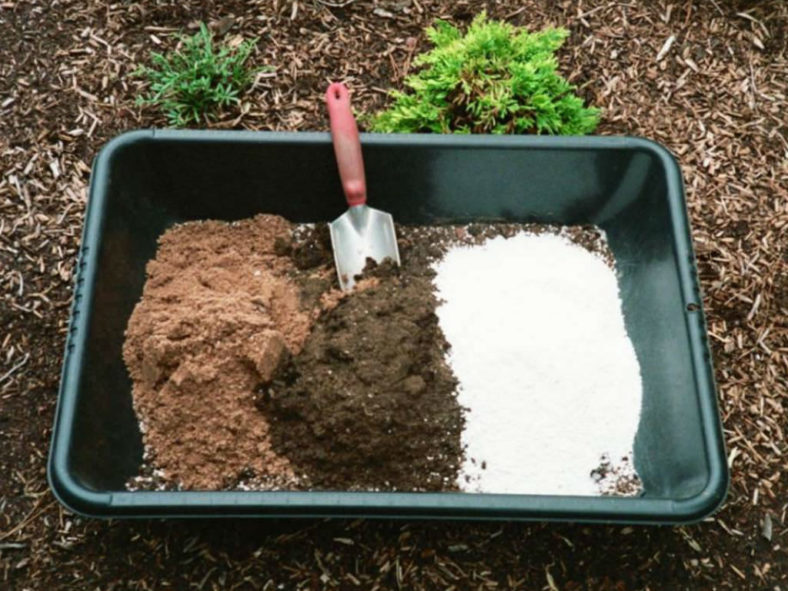Succulents require well-draining soil that allows roots to grow and air to circulate. Without these qualities, they are prone to rot, often resulting in the plant's death. Although commercial potting soils for succulents are readily available, making your own ensures the quality of the mixture and provides flexibility for experimentation. Combine ingredients in a large bowl, bucket, bushel basket, or clean garbage can, depending on the batch's size.
Soil
An adequate potting soil for succulents consists of two parts: soil or soil substitute. A soil-free commercial potting mixture is recommended for homemade potting soil because the soilless mix is lightweight, porous, free of weeds, and pre-sterilized to remove disease and bacteria often found in garden soil. High-quality garden topsoil is appropriate if it is sterilized before mixing it with other ingredients. Preheat an oven to 200 °F (93 °C) to sterilize garden soil. Spread the soil in a baking pan and heat it for 20 minutes. Stirring the soil every five minutes heats it evenly and prevents scorching.
Peat Moss
Potting soil with peat moss tends to retain too much water to keep succulents healthy and thriving. However, using peat moss as an ingredient for succulent potting soil is not a problem as long as you are careful of how much water you give your plants.

Sand
A ratio of one part clean sand provides a gritty, coarse texture to a potting soil mixture that enhances the air circulation and moisture drainage required by succulent plants. Sand is also beneficial because it anchors succulents and prevents them from becoming dislodged in a loose, lightweight potting mixture. A coarse builder's sand is preferable because beach and sandbox sands are too finely textured and dense.
Perlite
Incorporate one part of perlite into the potting mixture to add air space. Perlite, inexpensive and easily located in most garden centers, is a granular white puffy volcanic rock that improves drainage and prevents the compaction of the potting mixture. Vermiculite, also a volcanic byproduct, is a suitable substitute for perlite but is often more expensive. Alternatively, use crushed charcoal in place of perlite or vermiculite.
Additives
A small amount of limestone, rich in calcium and magnesium, balances soil pH and makes soil nutrients more available to the succulents. Similarly, bonemeal supplies phosphate, which stimulates root growth. Use approximately 2 ounces (57 gr) of limestone and 2 ounces (57 gr) of bonemeal for every 4 gallons (15 l) of the potting mixture.
Source: sfgate.com
Links
- Succupedia: Browse succulents by Scientific Name, Common Name, Genus, Family, USDA Hardiness Zone, Origin, or cacti by Genus